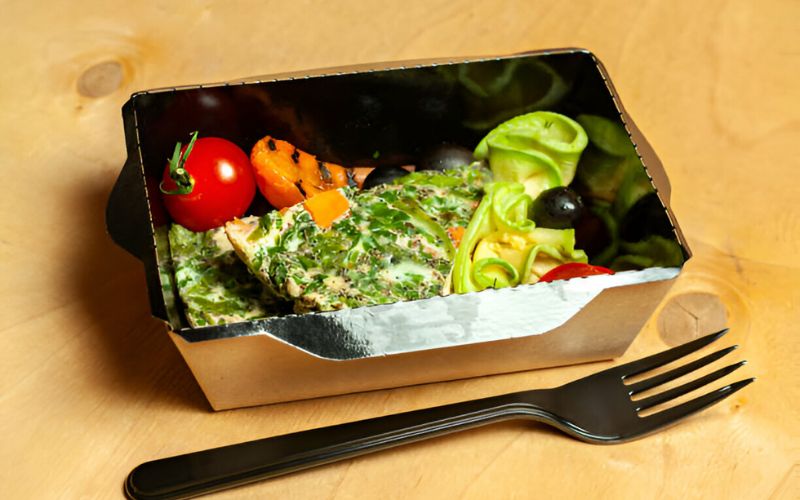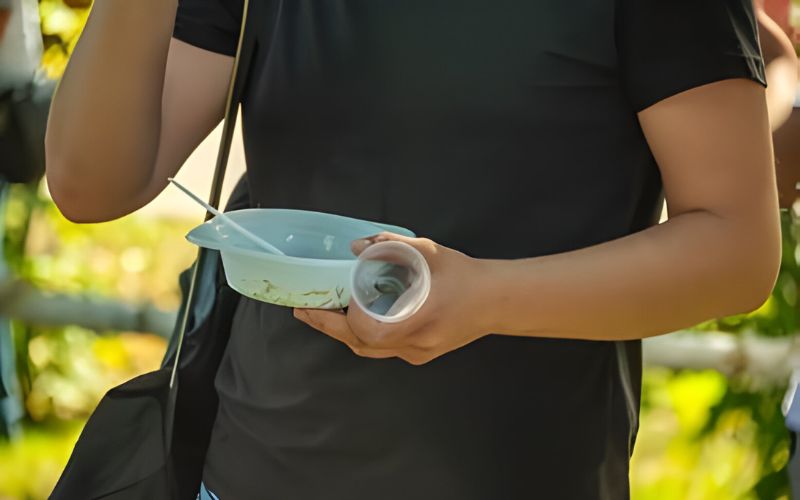As environmental concerns continue to drive consumer and corporate behavior, the importance of sustainable packaging solutions cannot be overstated. Compostable packaging, a critical component in the global effort to reduce waste and pollution, offers a viable and environmentally responsible alternative to traditional materials. In this article we aim to cover everything related to compostable packaging, Penning its materials, applications, and the significant role it plays in fostering a more sustainable future.
What is Compostable Packaging?
Compostable packaging is specifically engineered to break down completely into non-toxic, natural elements within a composting environment, typically within a timeframe of 90 to 180 days. The breakdown process relies on natural decomposition, facilitated by microbial activity under specific conditions of moisture, heat, and oxygen levels.
Materials Used in Compostable Packaging

The materials used for compostable packaging are derived from renewable plant-based resources such as corn starch, sugarcane, or potato starch. These bio-based materials not only ensure the packaging’s ability to compost but also reduce the reliance on fossil fuels typically used in conventional plastics.
Compostable vs. Biodegradable vs. Recyclable
While often used interchangeably, the terms compostable, biodegradable, and recyclable describe distinct processes and outcomes:
- Compostable: Products that can break down into natural elements in a compost environment, leaving no toxicity in the soil.
- Biodegradable: Refers to a product’s ability to be broken down by microorganisms over time, but without a specified timeframe or assurance of no harmful residues.
- Recyclable: Materials that can be reprocessed and reused in manufacturing new products, typically involving mechanical processing.
Types of Compostable Packaging
Compostable packaging encompasses a variety of forms tailored to different uses and industries, from food service to retail. In this section, we explore the key types of compostable packaging, highlighting their specific applications and advantages.
Compostable Food Packaging

Compostable food packaging is increasingly popular in the food service industry, where disposable items are in high demand. This category includes items like:
- Plates and Bowls: Made from pressed leaves or sugar cane pulp, these are perfect for both hot and cold foods.
- Cutlery: Typically crafted from PLA (polylactic acid) derived from cornstarch, offering a sturdy alternative to plastic.
- Containers: Includes everything from salad boxes to soup containers, designed to decompose effectively after use.
The benefits of using compostable food packaging include reduced environmental impact, as these materials decompose into harmless natural compounds that contribute to soil health, unlike conventional plastics that can linger in landfills for centuries.
Compostable Flexible Packaging

Flexible packaging refers to any packaging that can easily change shape. Compostable options include:
- Pouches and Wraps: Ideal for packaging grains, nuts, and snacks.
- Films and Bags: Used for wrapping fresh produce or baked goods.
Compostable flexible packaging reduces the volume of plastic waste, providing an eco-friendly solution that performs similarly to traditional plastic but with the crucial benefit of compostability.
Compostable Clamshell Packaging

Clamshell containers, often used for takeout food or retail products, are now available in compostable forms made from materials like bagasse or molded fibers. These containers are:
- Lightweight
- Sturdy
- Capable of handling both hot and cold items
They offer an excellent solution for businesses looking to enhance their environmental credentials without sacrificing functionality.
Compostable Retail Packaging
In the retail sector, compostable packaging is used for:
- Shopping Bags: Often made from cornstarch or other compostable polymers.
- Apparel Tags and Packaging: Including hangers and boxes made from recycled and compostable materials.
Switching to compostable retail packaging can significantly elevate a brand’s image, appealing to eco-conscious consumers and reducing the environmental footprint of their operations.
Why Compostable Packaging Matters
Understanding the significance of compostable packaging goes beyond its basic functionality; it’s about recognizing its profound impact on environmental sustainability and business practices. Here, we examine the key reasons why adopting compostable packaging is crucial for our planet and the future of industry.
Environmental Impact
- Reduction in Landfill Waste: Compostable packaging, when properly disposed of in compost facilities, breaks down into organic matter, helping to reduce the volume of waste sent to landfills.
- Lower Carbon Footprint: The production and decomposition processes of compostable materials typically generate fewer greenhouse gases compared to traditional plastic production.
- Conservation of Resources: By relying on renewable materials, compostable packaging reduces the dependence on finite resources such as petroleum, used in conventional plastic packaging.
Economic Benefits
- Waste Management Cost Reduction: Composting is generally less expensive than landfilling or incineration, potentially lowering waste management costs for businesses and municipalities.
- Market Demand: As consumer awareness and demand for sustainable products increase, companies that adopt compostable packaging can gain a competitive edge, attracting eco-conscious customers.
Compliance with Regulations
- Adapting to Legislation: Many regions are implementing stricter regulations on waste management, including bans on certain types of non-compostable packaging. By transitioning to compostable alternatives, businesses stay ahead of regulatory challenges.
- Certification and Standards: Products certified as compostable ensure compliance with international standards, providing businesses with credibility and trust in the marketplace.
Challenges and Considerations in Implementing Compostable Packaging
While compostable packaging offers significant advantages, several challenges need to be addressed to maximize its potential. This section discusses the main obstacles and considerations for businesses and policymakers.
Technological and Material Limitations
- Performance Issues: Some compostable materials may not yet offer the same level of functionality as their plastic counterparts, particularly in terms of durability and moisture resistance.
- Innovation and Development Costs: Developing new compostable materials can be costly and time-consuming, requiring significant investment in research and development.
Composting Infrastructure
- Lack of Facilities: The effectiveness of compostable packaging is contingent on the availability of industrial composting facilities, which are not yet widespread in many areas.
- Public Awareness and Usage: Educating consumers and businesses about proper disposal and the benefits of composting is essential to ensure that compostable packaging is treated correctly after use.
Economic and Market Factors
- Cost Implications: Compostable packaging is often more expensive than traditional options, which can be a barrier for small businesses and price-sensitive consumers.
- Supply Chain Complexity: Integrating compostable materials into existing supply chains can be complex and requires adjustments in procurement, manufacturing, and distribution practices.
Future of Compostable Packaging
As the demand for sustainable solutions continues to grow, the future of compostable packaging looks promising, driven by innovation and evolving consumer preferences. This section explores the trends and developments likely to shape the trajectory of compostable packaging technologies.
Innovations in Material Science
- Advanced Bio-based Polymers: Research is ongoing to develop new and improved compostable materials that offer better performance and environmental benefits.
- Enhanced Decomposition Properties: Efforts to reduce the time it takes for materials to compost fully are in progress, aiming to make compostable packaging more practical for widespread use.
Expanding Market Applications
- Beyond Food and Retail: New sectors, including electronics, pharmaceuticals, and cosmetics, are beginning to explore compostable packaging options to reduce their environmental impact.
- Global Adoption: As more countries invest in composting infrastructure and adopt stricter environmental regulations, the use of compostable packaging is expected to increase globally.
Role of Policy and Regulations
- Government Initiatives: Supportive policies and incentives for using compostable materials can accelerate their adoption.
- Standardization of Composting Protocols: Developing uniform standards for compostability can facilitate international trade in compostable goods and assure consumers of product legitimacy.
How to Choose the Right Compostable Packaging

Selecting the appropriate compostable packaging requires careful consideration of various factors to ensure it meets both business needs and environmental goals. Here, we provide guidance on how to make informed choices about compostable packaging.
A. Assessing Compostability and Environmental Impact
- Certifications and Labels: Look for products certified by recognized authorities (e.g., BPI, TÜV) to ensure they meet strict compostability standards.
- Life Cycle Analysis: Evaluate the environmental impact throughout the product’s life cycle, from production to disposal.
B. Understanding Product-Specific Requirements
- Compatibility with Products: Ensure that the packaging material is suitable for the specific type of product it will contain, considering factors like moisture, fat content, and UV sensitivity.
- Performance Criteria: Assess the mechanical and barrier properties of the packaging to ensure it performs adequately for the intended use.
C. Economic Considerations
- Cost-Benefit Analysis: Weigh the initial higher costs against long-term benefits such as waste management savings and enhanced brand image.
- Supply Chain Impact: Consider the availability of materials and the adaptability of existing supply chains to integrate compostable options effectively.
Case Studies on Compostable packaging
Compostable packaging is gaining traction as companies seek sustainable solutions. Here are a few case studies that showcase its impact:
1. BioPak: Closing the Loop on Food Packaging [archive.ellenmacarthurfoundation.org]
- Company: BioPak, a manufacturer of compostable food service packaging.
- Challenge: Reduce environmental impact of single-use plastics in food service.
- Solution: BioPak offers various compostable options like plates, bowls, and cutlery made from plant-based materials.
- Impact: Diverts food waste and packaging from landfills, creating nutrient-rich compost for soil regeneration.
- Key Takeaway: Compostable packaging can be a viable alternative to traditional plastics, but requires accessible composting infrastructure. BioPak explores options like biochar conversion for areas lacking composting facilities.
2. Canary Marketing: Reducing Packaging Waste with Eco-friendly Options
- Company: Canary Marketing, a marketing agency.
- Challenge: Minimize environmental impact of packaging for client materials.
- Solution: Partnered with EcoEnclose, a sustainable packaging supplier, to use compostable packing peanuts and tape along with recycled cardboard boxes.
- Impact: Reduced reliance on traditional plastic packaging materials, contributing to a more sustainable supply chain.
- Key Takeaway: Even small businesses can adopt eco-friendly packaging solutions, demonstrating a commitment to sustainability to clients.
3. Le Club: Pioneering Seaweed Packaging for Swimwear [ecoenclose.com]
- Company: Le Club, a sustainable swimwear brand.
- Challenge: Find a plastic-free window solution for their recycled cardboard boxes.
- Solution: Collaborated with EcoEnclose to create custom boxes with windows made from seaweed film, a fully compostable bioplastic.
- Impact: Eliminated plastic use in packaging while maintaining product visibility, showcasing eco-innovation to customers.
- Key Takeaway: Compostable bioplastics offer innovative solutions for specific packaging needs, enhancing brand image with sustainable practices.

